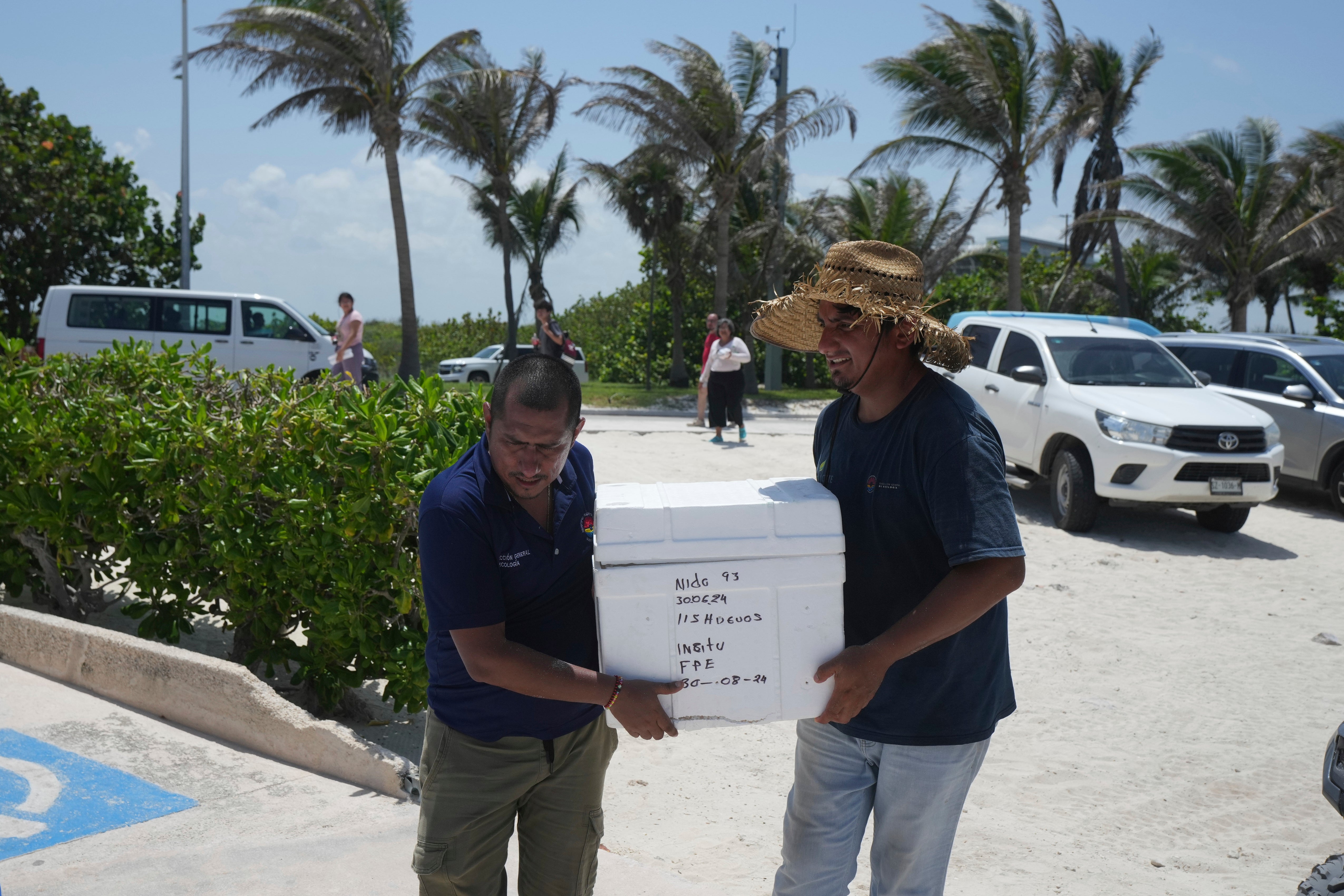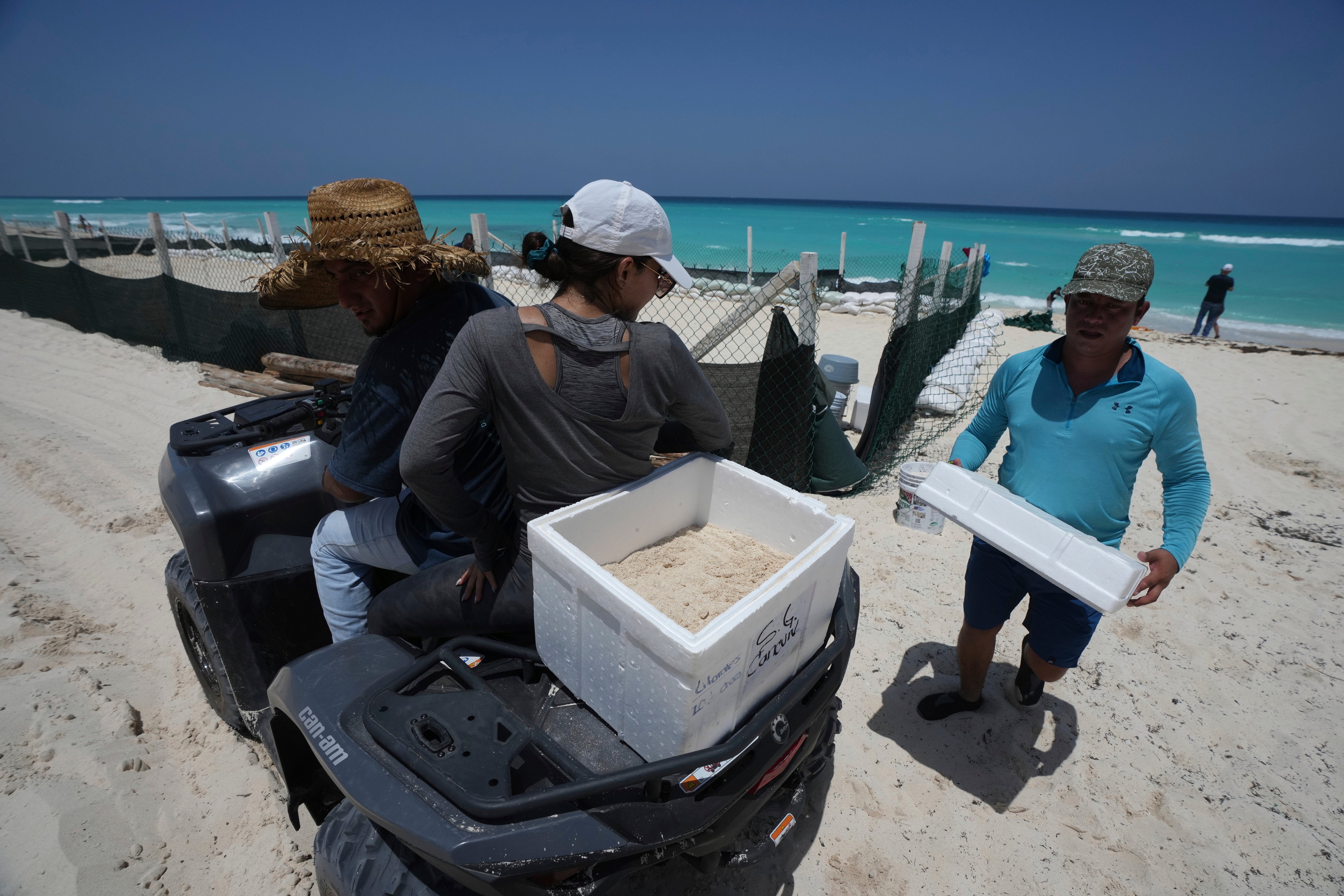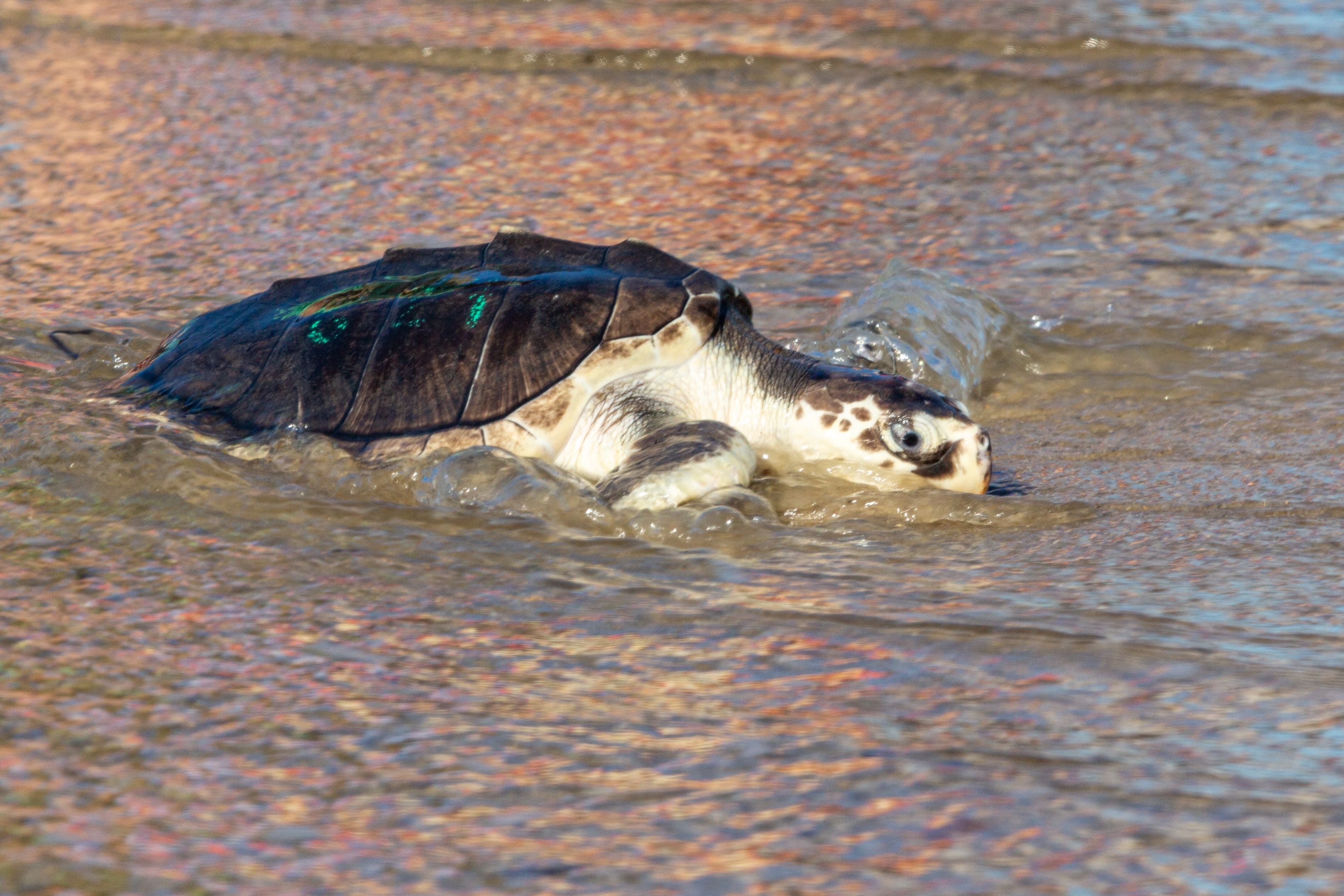More than 10,000 sea turtle eggs were rescued from Mexico’s beach ahead of Hurricane Beryl
Hurricane conditions can sweep turtle eggs out to sea, where they can’t hatch
As Hurricane Beryl approached Mexico’s Yucatan Peninsula this week, officials scrambled to evacuate an especially vulnerable group - sea turtle eggs.
Mexican officials moved to save the eggs on Wednesday ahead of the storm, which made landfall as a Category 2 hurricane near Tulum early Friday.
Officials relocated the eggs using sand-filled coolers and helped insulate their nests along the beach, the Associated Press reported. Storm surge and rises in sea level — conditions which Beryl and other storms cause — pose significant threats to sea turtle eggs, because they can’t hatch if they’re swept out to sea.
Graciela Tiburcio, a biologist and sea turtle expert, told the AP that moving the eggs would cause many to die — but the number would be higher if they did nothing.

“Look, it’s not the best thing to do, but we are facing an emergency in which if they don’t take them out, they all could be lost,” Tiburcio said.
It is still unclear where the eggs are or how many are safe. However, by the time Beryl made landfall in Tulum, state officials had protected more than 10,000 eggs from nearly 100 nests, the AP reported.

“In a normal situation this would not be right, because this will surely cause mortality,” Tiburcio said. “There will be a lower rate of hatched eggs, that is the reality. But it’s also a reality that if the nests are left there, they’ll all be lost.”
Five of the world’s seven sea turtle species live on Mexico’s gulf coast — and they are all threatened or endangered. One of these species, Kemp’s ridley sea turtle, lives primarily on Mexico’s western gulf coast.
Kemp’s ridley sea turtles are the smallest in the world and heavily protected.
To protect these species, each Mexican state has a hotline for passersby to report stranded sea turtles, dead or alive, according to the National Oceanic and Atmospheric Association.

Beryl, which weakened to a tropical storm on Friday, is expected to move into the Gulf of Mexico this weekend. There, it is expected to re-strengthen into to a hurricane, according to the National Weather Service.
The Yucatan Peninsula is now reeling from the dangerous storm. More than half of Tulum has no power, according to Laura Velázquez, national coordinator of Mexican Civil Protection. Hurricane-strength conditions downed trees and powerlines throughout the region.
However, no deaths have been reported in Mexico as of Friday afternoon.
Beryl’s death toll is now at eleven after sweeping through the eastern Caribbean. The death toll includes three dead in Grenada, three dead in St. Vincent and the Grenadines, three dead in Venezuela and two dead in Jamaica.
Join our commenting forum
Join thought-provoking conversations, follow other Independent readers and see their replies
Comments
Bookmark popover
Removed from bookmarks